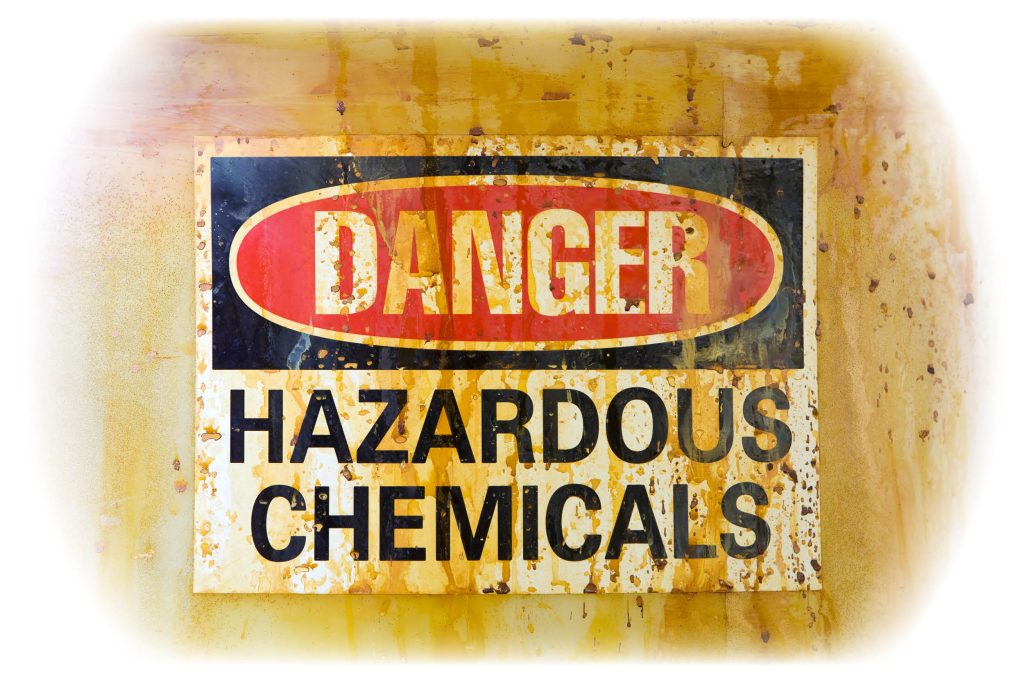The Right to Know
The Hazard Communication (HazCom) Standard ranked as the second most frequently cited violation by OSHA in 2023, with a total of 3,213 citations issued to non-compliant workplaces. In the United States, more than 43 million workers are regularly exposed to hazardous materials, contributing to 15% of all workplace injuries and fatalities, according to OSHA reports.
OSHA’s HazCom standard addresses chemical hazards in workplaces and the communication of these hazards to workers. It specifies the responsibility of the chemical manufacturer or importer, as well as employer obligations for implementing the HazCom plan.
Commonly referred to as the “Right to Know Act,” the Hazard Communication Standard was established by OSHA in 1983 to ensure the classification of chemical hazards and communication of those hazards as well as appropriate protective measures to employees.
THE REQUIREMENTS OF THE HAZCOM STANDARD ARE:
- Develop and maintain a written HazCom program for the workplace, including a list of hazardous chemicals on-site.
- Maintaining labeling of chemical containers entering or leaving the workplace.
- Updating and maintaining Safety Data Sheets (SDS) accessible to employees.
- Developing and implementing an employee training program regarding hazardous chemicals and protection methods.
THE WRITTEN HAZCOM PLAN MUST INCLUDE:
- List of the known hazardous chemicals present.
- Proper labeling.
- Safety data sheets.
- Employee training.
- Program implementation.
Essentially, chemical manufacturers or distributors are required to inform companies of hazards known to be present concerning the chemical through appropriate labeling and SDS’s present, while employers must promptly notify employees of these hazards upon initial start of work and provide necessary training on hazard awareness and protective measures. Additionally, training must be provided in the event of any changes.
Regarding labeling, OSHA adopted the Global Harmonized System (GHS) for hazard communication in 2012. The GHS, an internationally recognized standard, simplifies hazard communication by providing uniform labels worldwide. These labels consist of:
Product identifier
- In bold letters, what is inside
- Signal Word
- This is simple, either DANGER (more severe) or WARNING (less severe)
Hazard Statement
- Describes the nature of the hazard, such as, extremely flammable and toxic if inhaled, causes damage to kidneys if prolonged exposure.
Pictogram
- An easy to identify image for everyone, with red triangle outlining it. (see image on next page)
Precautionary Statement
- Advises worker on actions needed to prevent or minimize effects of hazard, such as, “wear eye protection” or “wear respiratory protection.”
Name, address and telephone number
- Of manufacturer or importer or distributor
Moreover, OSHA mandates that labels be legible and affixed to all containers, including secondary containers, to ensure clarity and safety in handling hazardous materials.
SDSs accompany hazardous chemicals and outline their dangers, safe handling procedures, and proper disposal methods. The standardized SDS format comprises 16 sections, covering essential information such as chemical identification, hazard identification, first aid measures, and regulatory information.
Safety Data Sheets (SDS), formally known as MSDS sheets, are sheets that now provide detailed chemical information and conform to GHS standards. The SDS’s must accompany hazardous chemicals and outline their dangers, safe handling procedures, and proper disposal of a chemical or hazardous substance. The SDS is composed of 16 sections in the same order every time.

The GHS SDS follows this format of 16 sections
- Chemical identification
- Hazard identification
- Composition information
- First Aid measures
- Firefighting measures
- Accidental release measures
- Handling and storage
- Exposure controls / personal protection (PPE)
- Physical and chemical properties
- Stability and reactivity
- Toxicological information
- Ecological information
- Disposal considerations
- Transport Information
- Regulatory Information
- Other information
Lines 12-15 are not mandatory by OSHA because they are governed by different agencies. (i.e. ecological information is governed by the EPA, and transportation by the DOT.)
Many OSHA violations occur due to employers’ failure to update SDSs with the latest information or provide timely and adequate training to employees. Comprehensive training is imperative and must include various topics, including SDS comprehension, proper labeling procedures, detection of possible release, health and physical dangers and effects, understanding of personal protective equipment (PPE) requirements, etc.
When a chemical hazard is present and PPE is required, we can supply these items and help protect our customer’s employees from sicknesses, injuries, and death. They will need protection from spills, inhalation, injection, absorption and burns that could happen when working with or around hazardous chemicals. These items can include proper gloves, face shields, chemical suits, respirators, air monitors, proper boots, etc. Providing our customers with proper PPE builds a more solid commitment to their safety and better our relationship.








